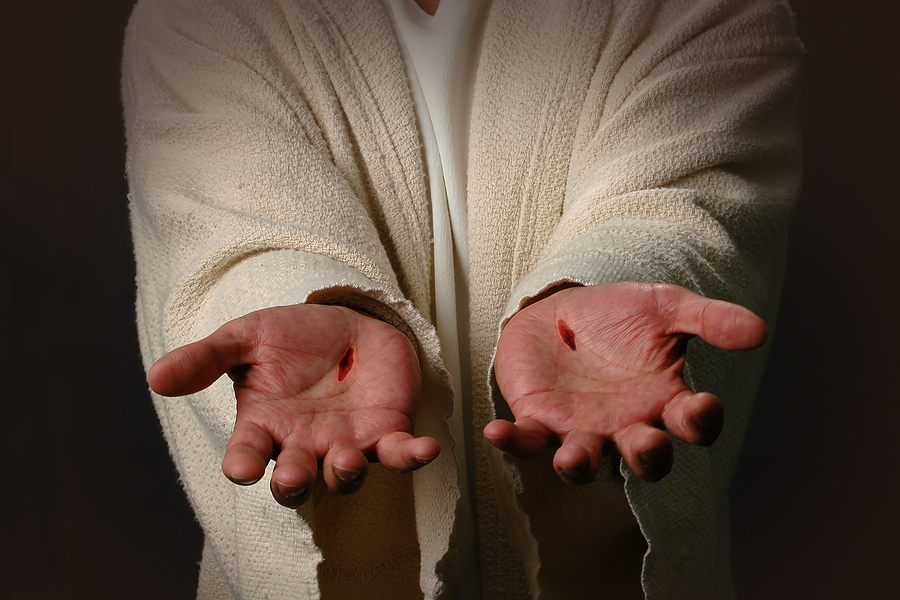 Have you passed the Thomas Test of Christianity?
Have you passed the Thomas Test of Christianity?
They told him about the first visit. About him appearing despite locked doors. About him speaking to them, wishing them peace. He is ALIVE, they told him. It was not enough for Thomas. He disqualified their test. He proposed his own norms, a more realistic experiment. “Let him show me his hands. Let him show me his side. Let him show me his wounds. If he has the wounds, I will believe, but if there are no wounds, no scars, then forget about him – it’s just wishful thinking.
A week later, we know the story. All the disciples are gathered. And Jesus appears. The others turn and look at Thomas. “Please, sir, may I see you hands? Please sir, may I see you feet? Please sir, may I see your side?”
What is remarkable about Jesus after the resurrection is that he still bears the scars – still bears the wounds that testify to his love for the disciples and the world. Even the glory of the resurrection does not wipe away the effects of the living and the dying. The wounds become the testament of Jesus’ love for us – proof in the rising that he is the love that he said he is. When Thomas sees the proof of love etched into the very body of Jesus, he believes. When he sees the wounds, the scars – he believes. And in so doing, he leaves us the test – the Thomas test. It is the test by which you measure one’s Christianity.
“You say you are a Christian. I ask you: ‘Please, sir, may I see your hands? You say you believe in your Lord as your savior. Please, madam, may I see your feet? May I see your side?’ If your hands are calloused from building habitat homes or dirty from serving the poor, if your feet ache because you have walked the extra mile with someone in need; if your heart is pierced for the love and loss of entering deeply into this world’s pain, then you pass the Thomas test.” That is the test by which a follower of Jesus will be known.
Sometimes those wounds are pretty obvious. What I most remember about my dad on the day he died was holding his hands as I knelt by his bedside. They were rough and calloused, and etched by the battery acid that was the mark of his trade. And no matter how scrubbed those hands were, that ‘grime’ which was the sacrament of his love for his family was etched into his very skin. Reflecting upon that experience months later, I realized that they were a part of my dad’s answer to the “Thomas test”. And if I ever doubted that my dad loved me or my brothers and sister, there was the answer, right there in the acid wounds that marked his hands, day in and day out. He bore the wounds of his love for us in his hands for his fair and honest labor.
Other signs of the Thomas test wounds are less telling. Sometimes it is the wrinkles around eyes that are still engaged in conversation about how someone else is doing when every joint in their body is screaming with the pain of arthritis. It’s the mom or dad who have bags under their eyes at work from staying awake with their son or daughter when they were ill. It is in the pens in the trash can which ran out of ink because you adopted an inmate on death row or a child in another continent as a pen pal. It’s the teens or young adults who sacrificed to spent their spring break working with the poor in Appalachia. Perhaps the wounds are there when you offer, as Jesus did, mercy to someone who desperately needs it, when you forgive what someone did to you without having to make them suffer, without a word of reproach or condemnation. When you find it in your heart to offer the divine mercy we know this Sunday – then you bear the wound of Christ in your side…
Thomas needed to see the wounds of Christ, because the love they bore witness to – the wounds made the resurrection real.
And Thomas needs to see the wounds of all who are followers of Christ as well – of those whose “have not seen, but have believed.” Please, people of the St. Justin: If someone were to ask you “Where are your wounds?” If someone wanted to see your hands and side, would you have anything to show them? Show me the scars that make you like unto Jesus. Then you’ll have passed the Thomas Test. Then you will be a Christian…
